
Listeners of a certain age are likely to think of one thing when the term “1960s Detroit” comes to mind: Motown Records, the buttoned-up Berry Gordy-run label that launched in the Motor City and introduced scores of legends to the lexicon: Diana Ross, Stevie Wonder, The Jackson 5, Marvin Gaye, and Smokey Robinson. And sure, they were cornerstone musicians—but they were all puritanical, at least in the ‘60s.
That opened the door for a label like Westbound Records, which was founded in 1968 and quickly became a hub for the city’s quirkier purveyors of Black art. Even the label’s name spoke to its esoteric, “anything goes” nature: Founder Armen Boladian thought of it driving westbound on 8 Mile Road. He was already immersed in the local music scene by the time Westbound launched, having operated the imprint Fascination, as well as his own Record Distribution Corporation. But by the late 1960s, a new sound was becoming the dominant genre in popular music: funk, a polyrhythmic strain of soul made fashionable by James Brown and Sly and The Family Stone. Perhaps sensing the changing tide, Boladian sought his own cast of eclectic funk acts to carry the mantle of Westbound while keeping things strange. And it was essential that they repped Detroit, or lived in a city nearby.
Enter the Ohio Untouchables, a Dayton-based group that had been making resonant music, but was ignored by the mainstream marketplace. They soon changed their name to the Ohio Players, brought a talented producer named Walter “Junie” Morrison into the fold, and released their debut album for Westbound, Pain, in 1972. The music mixed festivity and lust, and the cover depicted bondage as a form of sexual liberation, thanks to model Pat Evans. There was also the Detroit Emeralds, a traditional soul trio whose backing band played lush and brassy instrumentals with slight orchestral flourishes. There was also another group on the roster—an ever-expanding organism that lumped funk, jazz, acid-rock, gospel, and the blues into an amorphous mixture of sound—called Funkadelic. Led by the polymath singer and producer George Clinton, the band released eight albums on Westbound between 1969 and 1976, the first two so groundbreaking they remain cornerstone records for all of music. Their music birthed generations of like-minded creators, making it OK for Dr. Dre to produce bass-heavy G-funk, and for Flying Lotus to craft spacey blends of electronica.

While Funkadelic was by far the biggest act signed to the label, Westbound was full of exceptional talent, from the emotive blues of Denise LaSalle to the soul-jazz of Caesar Frazier. More than 50 years have passed since Boladian’s now-landmark drive down 8 Mile Road and the subsequent launching of the world’s funkiest label. To celebrate Westbound’s arrival at Bandcamp, here are some essential albums to get you started.
Funkadelic
Funkadelic
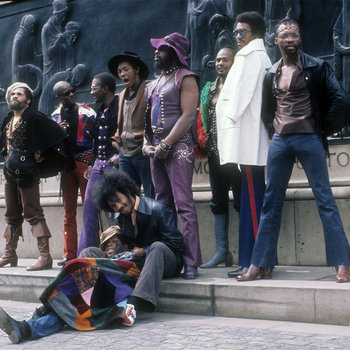

Though not as acclaimed as its predecessors, Free Your Mind… and Maggot Brain, Funkadelic’s debut album set the stage for Clinton and company moving forward. I mean, just take the record’s opening line: “If you will suck my soul, I will lick your funky emotions.” …OK. From there, on the track “Mommy, What’s a Funkadelic?,” the band strolled into a sultry groove on which Clinton introduces his newly revamped collective. The group’s origins go back to 1964; members of the band were part of Clinton’s old doo-wop group The Parliaments. After bouncing around the industry for some time, Funkadelic signed to Westbound in ‘68 and transformed their sound from sweet, symphonic melodies to gutsy, psychedelic funk. Though there was a lot happening on Funkadelic (and the aesthetic seems tame compared with their future output), the beating heart of “I Bet You” and “Good Old Music” laid the groundwork for the sampled-based form of rap music. Equally wistful and self-indulgent, Funkadelic splits the difference between Motown, Stax, and Jimi Hendrix without losing focus.
Ohio Players
Pain
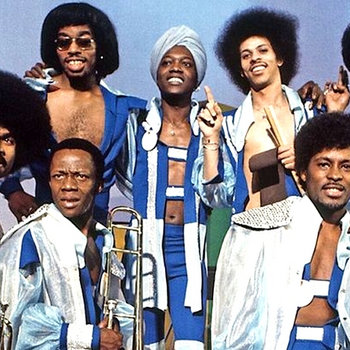

Let’s get the obvious out of the way: The Ohio Players might be more well-known to some for their provocative album covers—which, when blown up to the specs of a vinyl jacket, can be intimidating—than their music. That was done on purpose, a juxtaposition with the sweltering funk and upbeat grooves that saturated the music. And to think that the Ohio Players, and their album Pain, almost didn’t exist: The band’s first LP, Observations in Time, had been a minor hit for Capitol Records, but it flexed only a small part of their artistry. On Pain, the group played expansive arrangements that became rich cover material for their creative progeny: For his outro to Welcome 2 Detroit, producer J Dilla sampled this record’s title track. “Players Balling…” re-emerged as the opening chant of D’Angelo’s overwhelmingly great Voodoo. “The Reds” still stands as a hypnotic rendering of the blues, and “Singing in the Morning”—with its echoed drums and searing trumpet wails—imparts the gospel of Sunday morning Baptist church services. “Never Had a Dream” was rapturous in the same way, except the air around it was more sultry and humid. Pain marked the start of an illustrious run for the Ohio Players on Westbound.

Detroit Emeralds
You Want It, You Got It
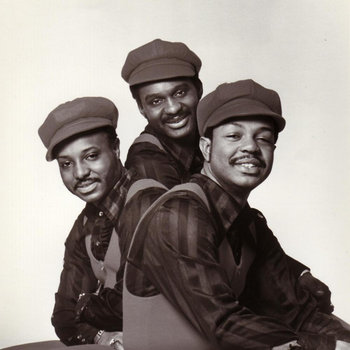

The Emeralds began as a Little Rock-based vocal harmony group in the late ‘60s before moving to Detroit and adding the city to its name soon after. They signed with Westbound in 1970 and released the album Do Me Right a year later. That album, with its stomping percussion and billowing strings (a staple of early ‘70s soul), set the table for the group’s breakthrough You Want It, You Got It, released in 1972. Though not a stark departure from their previous effort, its rhythmic loops and gospel-infused soul conveyed the group’s sonic center better than Do Me Right. On “I’ll Never Sail The Sea Again,” the vocalist’s almost preacher-like cadence captures the song’s delicate heartbreak. “Baby Let Me Take You (In My Arms)” and “Feel The Need In Me” were commercial hits that broadened the group’s audience from local to national. The Detroit Emeralds’s name may not ring bells in the same way as Funkadelic or the Ohio Players, but their contribution to the label was just as vital.
Funkadelic
Free Your Mind…


If you follow Funkadelic, you likely know the story of this album: The band dropped acid and recorded as much as they could while under the influence. The results were grating, bizarre, and mystifying—and given its release right after their debut album, it provides a nice one-two punch of the somewhat sedated and the downright hallucinatory. But while it’s far out, it never leaves the listener behind. The title track sprawls into a shapeshifting headbanger with ear-splitting guitar riffs that bounce between speakers, pulling you deeper into the hysteria. It’s like you’re falling down a hole, the quicksand growing thicker as guitarist Eddie Hazel works his magic. While the theme isn’t overtly present, Free Your Mind… explores Christianity as internal nirvana. To Funkadelic, the afterlife wasn’t some pearly metropolis on high; “the kingdom of heaven is within.” And don’t seek validation from mere mortals, either. As Clinton said on the LP: “Freedom is free of the need to be free.” It set the stage for Funkadelic’s greatest feat…
Funkadelic
Maggot Brain
…Maggot Brain. What else can be said about this masterpiece that hasn’t been said already? It’s the album that’s spawned a million thinkpieces, whose murky, gospel-infused funk and rock has been dissected, praised, beloved, and worshipped for the past 50 years. Its title track is legendary, centered on a transformative guitar solo by Hazel, who was prodded by Clinton to play as if his mother had just died. Rarely has a solo instrument elicited that much emotion; Hazel—summoning his hero, Jimi Hendrix—excavated the soul of the guitar gawd while conveying the decay of an earth fouled by pollution, societal despair, and partisan politics. Much like Gaye’s What’s Going On and Sly’s There’s a Riot Going On, Maggot Brain was a direct response to the shit show that was the United States in 1971. And while the other albums unpacked trauma through meditative soul and funk, Maggot jammed its finger in the lapel of corrupt politicians who brought despair to the masses beneath the ivory tower. To that end, “Wars of Armaggedon” is a jumbled mass of praise chants, mooing cows, and crying babies laid atop a pounding rhythm. Somehow, it made sense; the world was messy, and it spoke to the struggle of daily existence. Easily one of the greatest albums of all-time, Maggot Brain forever endures.
Junie
Suzie Super Groupie
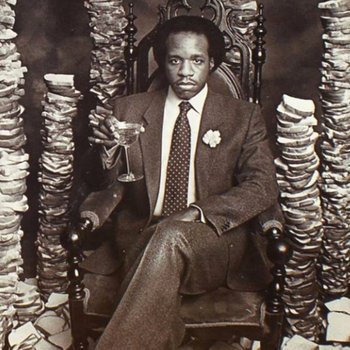

OK, let’s get the obvious out the way: Go to “Suzie Thundertussy.” A jam, right? Now go to this song. Sound familiar? Sampling snitching aside (don’t worry, it was cleared), Suzie Super Groupie was a concept album about the trappings of fame and sexuality amid the cultural veneer of Los Angeles. It was the third solo album released by the Ohio Players co-founder, and the one that’s had the longest staying power beyond the LP’s 1976 release. It was just as expansive and psychedelic as his previous two albums, When We Do and Freeze, yet Suzie was much more streamlined, which allowed the narrative to shine through without distraction. Songs “Super Groupie” and “Suzie” were forthright disco gems; “Spirit” was an edgier track with manufactured applause and manipulated vocals. It all combined to tell the story of a person who treks to Tinseltown for a life of fortune, only to find it’s not what she expected.
Fantastic Four
Alvin Stone (The Birth and Death of a Gangster)
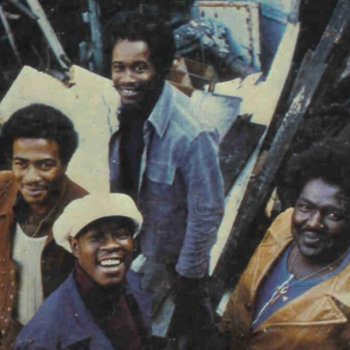

With the rise of Blaxploitation films in the 1970s, film directors turned to soul musicians to score movies with brassy arrangements. The music helped tell the story, and in some cases, singers unpacked the film’s narrative in the title track. For their debut album on Westbound, Fantastic Four created their own story, releasing the concept album Alvin Stone as an imagined tale about a problem child who grows to become a problematic gangster in his hometown. “Anything I see I want,” goes a line from the title track, “I’m gonna take it.” But there’s strong social commentary woven throughout the album: It not only indicts Alvin as a cold-blooded hoodlum, it also takes society to task, getting into the why of Alvin’s nefarious path. Despite the subject matter, Alvin Stone maintained a mostly uptempo pace, making it a straight-up party with deep messaging underneath. The message: deal drugs and wind up dead; no one comes out unscathed.








